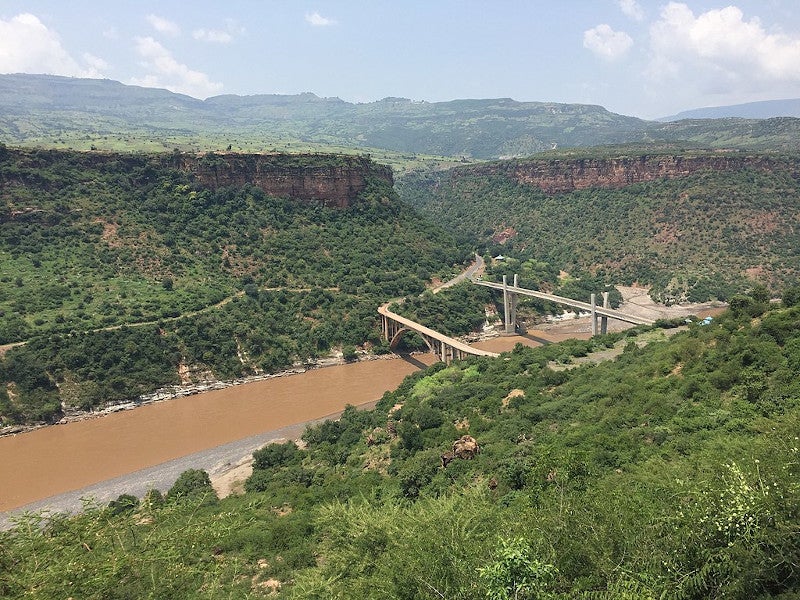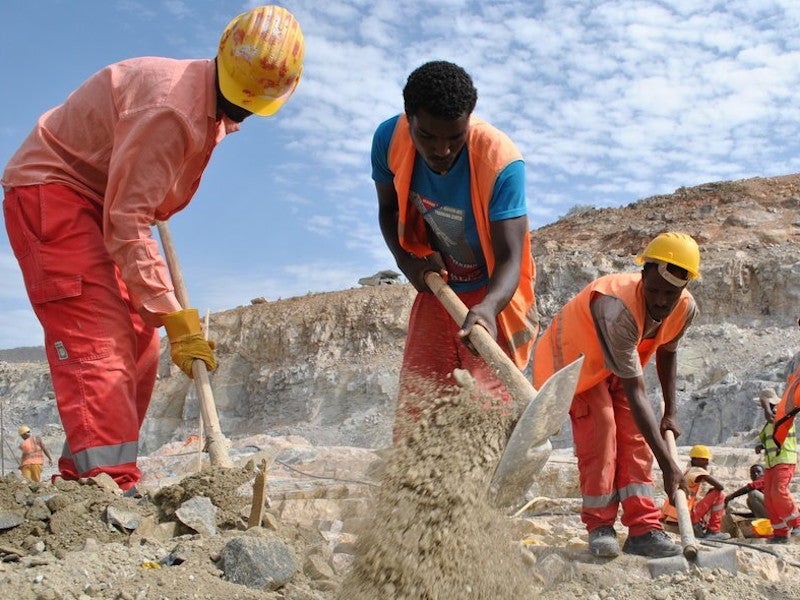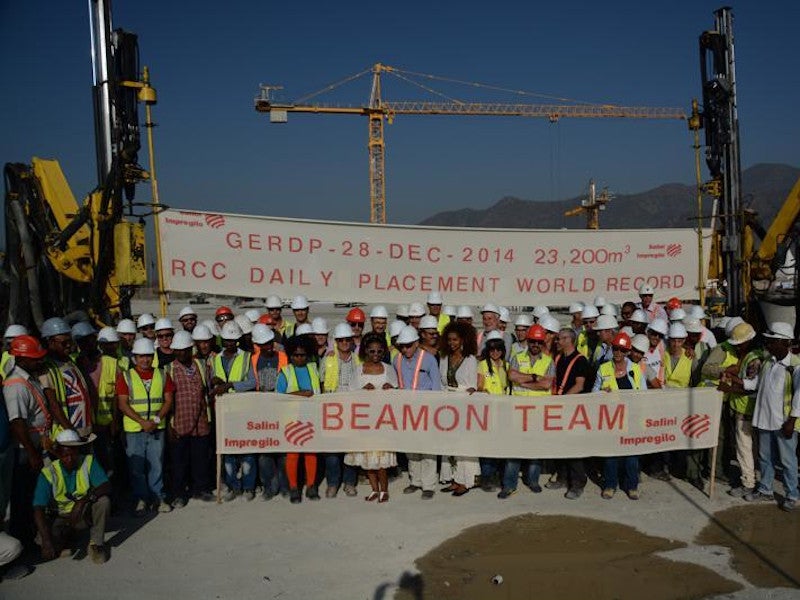The Grand Ethiopian Renaissance Dam (GERD), formerly known as the Millennium Dam, is a 6GW hydroelectric power project under construction on the Blue Nile River in Ethiopia.
Being developed by state-owned public utility enterprise Ethiopian Electric Power Corporation, Grand Renaissance Dam will be the biggest hydropower station in Africa.
It is also one of the world’s most controversial dam projects as it involves a long-running international dispute between Ethiopia, Egypt and Sudan over the Blue Nile water sharing. Ethiopia accounts for more than 80% of the Blue Nile water in its territory alone and the downstream countries Egypt and Sudan fear the dam construction will reduce the water flow on the river and cause drought-like situations in their territories.
The construction on the £4bn ($4bn) project was started in April 2011 and the dam was two-thirds built as of the beginning of 2020. The facility is expected to commence operations by the end of 2022.
Upon commissioning of all 16 generating units, the 6GW Grand Renaissance hydroelectric power station is expected to generate approximately 15,000GWh of electricity a year.
Location and river details
The Grand Renaissance hydropower project is located on the Blue Nile, which is a major tributary of the world’s longest river the Nile River contributing up to 80% of its water during the rainy season.
The Blue Nile originates at Lake Tana in north-western Ethiopian Highlands and runs for approximately 1,450 km to meet another major tributary the White Nile in Khartoum, Sudan.
The Grand Renaissance Dam is being built at a narrow point on the Blue Nile approximately 40km downstream of its confluence with the River Beles and approximately 15km upstream of the Ethiopian-Sudan border.
The project site is located approximately 500km north-west of capital Addis Ababa in the Benishangul-Gumaz region of Ethiopia.
The Grand Renaissance hydropower station components
The Grand Renaissance hydroelectric facility comprises a concrete gravity dam on the Blue Nile River with a storage capacity of 70 billion cubic metres (bcm) of water, one outdoor powerhouse on each bank of the river, three spillways, and a saddle dam.
The powerhouse on the right bank will be equipped with ten 375MW Francis turbine generator sets while the left bank powerhouse will have six similar capacity turbine generators. Each turbine will be driven by the water flow through an 8m-diametre, 180m-long penstock.
Grand Ethiopian Renaissance dam details
The main dam of the Grand Renaissance hydroelectric power project will be a 1,780m-long and 155m-high roller-compacted concrete (RCC) gravity dam which will create up to 1,680km² of reservoir area.
The river diversion system for the project includes four 210m-long and 8m-wide box culverts with a total discharge capacity of 14,700m3/s.
The project also involves a 5km-long, 60m-high concrete faced rockfill (CFRD) saddle dam with an embankment volume of approximately 17m3.
Power transmission
The electricity generated at the hydroelectric facility will be stepped up to 500kV and transmitted through overhead lines connecting to a 500kV double bus-bar switchyard located downstream on the right river bank.
Contractors involved
Salini Impregilo (now Webuild Group) is the main construction contractor for the dam project, while Ethiopia’s military-controlled Metals & Engineering Corporation (METEC) was contracted for electromechanical and hydraulic steel structure work for the power station.
The contract with the METEC was however cancelled on project delay and corruption charges in the second half of 2018, and the new contracts to fulfil METEC’s works were awarded to a group of foreign companies including Salini Impregilo, GE Hydro France, China Gezhouba Group, Voith Hydro Shanghai and China’s Sinohydro Corporation in 2019.
Studio Pietrangeli was engaged to provide engineering services for the feasibility study, basic and final designs, as well as construction supervision services for the project.
Tractebel Engie was selected to provide Owner’s Engineer services to EEPCO as well as assistance in the management and supervision of the EPC construction contract for the project during the period from 2010 to 2018.





